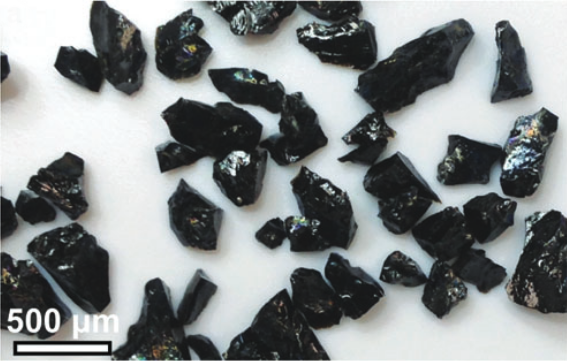-
Non-Biological Formation of Tubules in Subsurface Volcanic Glass
February 07, 2019 / Posted by: Miki Huynh
Image of basalt glass shards before being put through an experiment to test whether microtubules will form after exposure to seawater and whether the glass will be altered by fluid-rock interactions. Source: T. McCollom / C. Donaldson / Astrobiology.A connection between microbial activity and the appearance of microtubules in basalt glass has been proposed in the past, but direct evidence for biological processes being in their formation is still lacking and non-biological origins are possible. Thomas McCollom and Christopher Donaldson, supported in part by the NASA Astrobiology Institute team based at the University of Colorado, have conducted an experiment simulating a process where subsurface glass would be exposed to seawater and altered by fluid-rocks interaction, a process that might also lead to the formation of microtubules. Their results did not produce evidence for non-biological tubule formation, but did produce other structures that have sometimes been attributed to biological processes. This may indicate a more limited extent of subsurface microbial activity in the basaltic crust.
“Experimental Constraints on Abiotic Formation of Tubules and Other Proposed Biological Structures in Subsurface Volcanic Glass” is published in Astrobiology.
Source: [Astrobiology]
- The NASA Astrobiology Institute Concludes Its 20-year Tenure
- Global Geomorphologic Map of Titan
- Molecular Cousins Discovered on Titan
- Interdisciplinary Consortia for Astrobiology Research (ICAR)
- The NASA Astrobiology Science Forum Talks Now on YouTube
- The NASA Astrobiology Science Forum: The Origin, Evolution, Distribution and Future of Astrobiology
- Alternative Earths
- Drilling for Rock-Powered Life
- Imagining a Living Universe
- Workshops Without Walls: Astrovirology